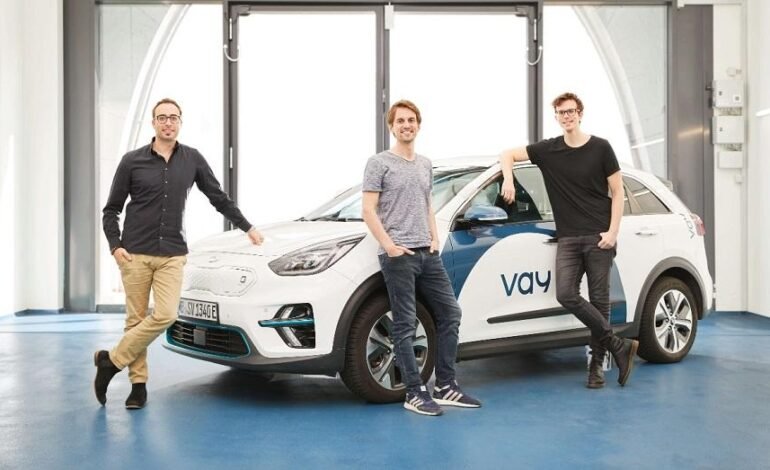Vay’s Teledriving Tech: A New Age for the Transport Market of Europe

In the recent past, Urban mobility has been evolving quickly as new technologies seek to improve how people go about their daily business. Citizens who are suffering from certain health issues can benefit from one such breakthrough; there is something known as teledriving, which permits drivers to remotely control vehicles. Leading this innovation is Vay, a Berlin-based company that has innovated the use of teledriving technology to address current and emerging transport concerns.
What is Teledriving?
Teledriving is a system where drivers are professional and they can operate vehicles through a remote control station. While fully autonomous cars employ specially designed artificial intelligence and sensors only, teledriving always involves a human operator. It does this while providing the ability for human decision-making more quickly than a fully autonomous vehicle, which could make this type of system safer and easier to implement in question public roads. The idea sits right in the middle between cars driven by people today and the self-sufficient automobiles of the future.
What makes Vay different from other ride-hailing services is affordability – the new service is around 50% cheaper but without dropping convenience. With electric vehicles and optimized car access, it also holds the potential to bring down the number of cars on the road – a point that fits in well with trends aimed at making our cities more people-friendly and sustainable.
EIB’s Investment: A Boost for European Mobility
In a recent development for the company the European Investment Bank (EIB) has approved a €34 million loan to Vay. These funds will allow Vay to grow its reach throughout Europe and continue to refine the customer-focused teledriving solution. The loan forms part of the bigger InvestEU which is a five-year plan that is aimed at launching new technologies in the European Union region.
This particular investment from the EIB is a very positive indicator of Vay’s prospects for growth. The EIB-Vice President, Nicola Beer, said that Vay was one of the pioneers in the mobility market, the company’s activity could give people urban transport with higher efficiency and lower impact on the environment. As Vay’s CEO, Thomas von der Ohe said, the investment was also strategic because it would not only increase the size of the firm but also foster consumer trust as well as that of partners and regulators.
A Larger Presence in Europe and Other Parts of the Globe
Therefore though Vay is based in Europe the company has already begun diversifying into other countries. The history of Vay started in September 2022 and in January 2024, the company produced its first commercial teledriving service in Las Vegas. This service gives Las Vegas residents a taste of teledriving where cars are driven to you and later returned after you are done with them.
Returning to Europe, the author informs that Vay had been in touch with several city authorities providing them with teledriving facilities in other cities. One accomplishment was the company’s test of the car without a safety driver in Hamburg, Germany in 2023. This paved the way for further negotiations with the German authorities and is set to open the floodgate to commercial deployment of the service in the city.
The Solutions to the Problems Powdered by Modern Transportations
Teledriving enhances several advantages when compared to conventional transport paradigms. First, it removes this problem, which is one of the most stressful aspects of life for drivers, especially in large cities. Because a remote driver performs parking and retrieval, the riders are likely to end up having a comfortable door-to-door service.
Second, it holds a promise to remove the incentive for owning a personal car, which is necessary for teledriving. With the right management of shared cars in its fleet, Vay’s service will reduce the number of private cars on the road, which is partly responsible for traffic jams and pollution. This is in line with the current global push for the reduction of carbon emissions, and encouraging people to live green.
Looking Ahead: The Future of Teledriving
EIB has now invested in Vay and with the success it is now having and the launch in the US and Germany will make Vay one of the dominant players in the future environment of urban mobility. Possibly, the company’s policy is near perfect since it has designed a system in which human discretion complements technology to yield an excellent system with a human face










